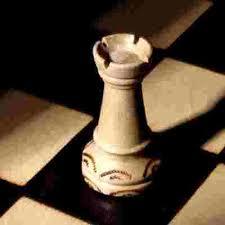
Improving Practical Rook Endings
I am well aware of the theoretical Rook endgames: Lucena, Philidor, Rook on long side, 3 vs 4, frontal attacks etc etc… Yet when I find myself in more complicated Rook Endgames especially in time pressure, I find that my instincts often betray me. To counter, I am going to analyze Rook endgame where one side has a straight forward win, but is perhaps slightly counter intuitive in hopes of rewiring my intuition and improve my overall Rook endgame play!
In the following position Black faces a key decision. He is a pawn down but thanks to his active Rook he looks to regain the material; additionally favorable for Black is his active King which would love to penetrate even further up the board to support his future passed pawn; however, the dilemma is that doing so would give White a second passed pawn.
So the decision is thus: Black drops his Rook back allowing a promising looking pawn ending (Thanks to White’s horrid King on h2) or go for the gusto and advance the King!
Let’s have a look at the wrong decision (the one I made in the game!)
I played Rd5 thinking that the pawn ending should be winning for me. I also was afraid of dropping my a-pawn. But on a surface level, can it ever be the right decision to forgo the improvement of your King in favor to deactivating you Rook?
From here Black has two potential plans. We'll look at Kc4 with the idea of making his own Queen as quickly as possible first as this contains Black only realistic winning chances slim as they may be.
The second plan is to win the e4 pawn and then go make Queen but this takes too much time and allows White to get his King in the game. Black has some "Winning" ideas but they all fail in quite nice fashion but sure to check the notes for the PGN to see how they fail! It is quite entertaining!
Having dismissed the pawn ending, we turn back to the Rook Ending. Its amazing how much easy it is to play and how much lesson calculation is actually needed. Trying to win the pawn ending took some pretty serious calculation which utimately failed anyway!
Often my Rook endgames are marred with passive play such as Rd5? For those of you wondering how the game actually ended; my opponent didn't even go into the Pawn ending. He allowed me the chance to go back to d2 with my Rook and repeat... Did I take my second change? Nope... instead my found myself in a totally passive position and deservingly lost.
I hope you found all this as instructive as I did! Thanks for reading!
